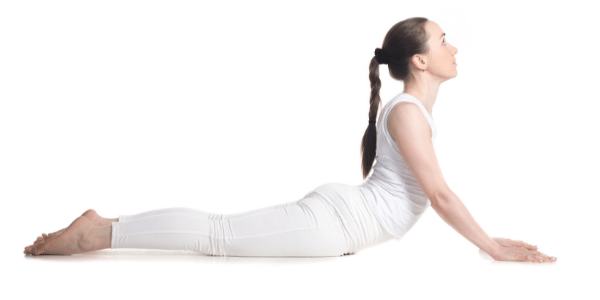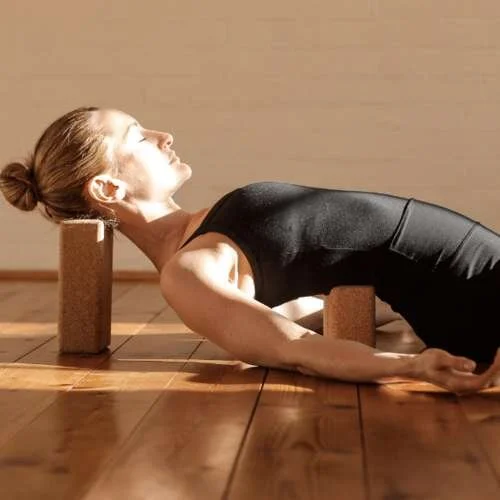Know Before You Go! Yin & Restorative Yoga
Yin and Restorative yoga continue to gain in popularity, but while they've both been around for a while, they are not as well known in the mainstream as say, Vinyasa, Power, and Ashtanga. Both styles of yoga have many benefits, some of which overlap, and because of this they are often confused for one another; but it is important to understand that they are not the same. This article will provide an overview of each, their benefits, similarities, and differences so that you can make an informed decision about whether these styles are a good fit for you.
Nobody likes signing up for a class and then finding out it's not at all what they expected! And as much as I hate to say it, many yoga teachers can inadvertently cause some of this confusion with their choice of words. This article should help you be able to decipher class descriptions better so you know what the class is really about and ask questions if needed.
Let's dive in...
Where did Restorative and Yin Yoga originate?
Both styles are descendants of yoga practices dating back thousands of years. Restorative yoga origins seem to trace back to B.K.S. Iyengar a 20th-century yoga master known for his Iyengar style of yoga. Iyengar began exploring the use of props to help students find support in poses without injury. Judith Lasater, a student of Iyengar’s, has been teaching since the early 70s and is perhaps most well known for the rise of Restorative yoga. She is the author of several books on the subject.
Yin yoga origins trace back to both traditional Hatha yoga asanas and Daoist Chinese medicine as it incorporates principles from both. Paul and Suzee Grilley are largely credited with bringing this style forward in the 90s and popularizing what we currently know as Yin Yoga. Along with the Grilleys, Bernie Clark is also a well-known and sought-after instructor. His site yinyoga.com is an excellent resource for anyone wanting to learn more about Yin yoga. These instructors are a wealth of accessible and helpful knowledge on yoga and the human body. (Personal side note: I've been fortunate to have taken some online classes from these folks and in-person training with them is on my bucket list!). Other well-known instructors you may have heard of are, Sarah Powers and Travis Eliot.
What is Restorative yoga?
Restorative yoga's purpose is exactly what its name implies: to restore body and mind. It is a deeply relaxing practice utilizing different props (pillows, bolsters, blocks, blankets, straps, chairs, etc.) to support the body in each pose. This allows the body to completely release and relax. Poses are done seated or lying down and are held anywhere from 5 to 20 minutes and most classes incorporate a small number of poses for this reason. Teachers will guide you into the pose and help you with your props. They may provide a meditation of some type or theme, but most restorative classes will involve very little talking. The class will end with an extended Savasana using props.
An example of a restorative pose (Reclined Supported Butterfly) is below:
What is Yin yoga?
We've all heard the term Yin vs. Yang, right? Yin yoga is considered to be the "Yin" to other more "Yang" forms of exercises or yoga, like power vinyasa for example. It is a slower, "cooler" practice. Yin focuses on the meridians of the body (from Chinese medicine) much like acupuncture does, to help harness the flow of Qi (chee) or energy through the body. It also focuses on the joints and deeper connective tissues of the body (i.e. fascia), not the muscles, and is helpful for improving flexibility and mobility. This is why Yin yoga is most often done without any warmup and cold muscles. They are uninvited to this party.
Like Restorative, Yin poses are low to the ground and can use some props when needed. The poses, however, are only held for 2-7 minutes. Holding the poses for this amount of time is what allows for those connective tissues to stretch, lengthen and strengthen as positive stress is applied. The results come from the time in the pose, not how flexible you are. Also, it's not uncommon to be sore the next day when you're new to a Yin practice.
It is important to understand that, unlike Restorative, there is some intensity with a Yin practice both physically and mentally. There are three key factors or principles to a Yin yoga practice:
Finding your edge: In each pose, you want to go to the point of feeling tension/stretch, NOT pain.
Holding the pose: Once you've found your edge you need to hold here and settle in. Props can be used to help, but you need to keep the edge.
Finding stillness: Once you've settled into the pose, you need to find stillness, of body and mind. Focus on your breath, your intention.
As with Restorative, Yin is often taught with very limited talking between poses. This is where the challenge of being at your edge and making the mind/body connection to help you through it can be very powerful and can help you to learn to be comfortable with discomfort. In a world where many of us are in a constant state of motion between one obligation and the next, being still can be challenging.
In between poses, your instructor will offer "counter-poses" as a reset before moving on to the next pose. These counter-poses can feel like a wonderful release. The class will end with Savasana, and as in all yoga classes, it is important to take Savasana to allow your practice to 'set'.
An example of a Yin pose (Seal) is below:
What benefits do they share and how can they help with stress?
While the intensity and overall intention of each style differ, they do share many benefits such as:
Engaging the Parasympathetic Nervous System (PNS). Your "rest & digest" system.
Increased mind/body awareness
Potential to lower blood pressure
Ah, but how do they help with stress?
Yin helps this way:
Learning to focus on your breath to help you through periods of discomfort.
Learning to be still and present with your thoughts and not running from them.
Helps with flexibility/mobility and flow of energy. These can increase your general sense of physical well being which in turn, can lower your stress levels.
Restorative helps this way:
Provides a supportive environment, literally and figuratively, for relaxation.
Not taxing on the physical body. Modifications and props can be customized to your needs.
Focus on slowing the breath, allowing mind and body to relax
And of course the biggest key to helping with managing stress that they both offer is engaging your PNS! "Rest and Digest" and "Fight or Flight" are both important to our survival as humans. What we need though is to strive for an appropriate balance between the two. We can't be in "Fight or Flight" mode all the time. It will break us down both physically and mentally. Engaging the PNS is key to giving the mind and body the time to find balance and restore!
Who are they a good fit for?
The good news is that Yin and Restorative yoga can pretty much be done by anyone with a few guidelines to consider. Personally, I practice both myself and they are my favorite to teach as well! Here's a quick breakdown of for whom these might be a good fit.
Yin
Anyone looking to work on mobility and flexibility.
Athletes/exercisers needing or wanting a different kind of active rest day practice.
Anyone willing to explore finding and engaging with their edge in the poses and to not push beyond it.
Anyone wanting to foster the mind/body connection.
Relatively healthy (uninjured) individuals. Yin is not "hard" but it also not "easy" so it is always wise to check with your medical professional to ensure it is safe for you.
Restorative
Anyone looking to ease stress and find calm both mentally and physically.
Anyone wanting to foster the mind/body connection.
People recovering from or dealing with illness or injuries.
Summary
We've covered a lot of ground and hit the high points of understanding Yin and Restorative yoga, so I will leave you with a few closing thoughts to keep in mind if you choose to explore these yoga styles further.
First and foremost, do your research and find an instructor who is certified in these styles. It should give you comfort knowing you are being led by a teacher who understands them and has dedicated some of their training and education to them. And, as with any form of yoga, don't give up if your first teacher or class isn't the right fit. I speak from experience, there is a class and a teacher out there for everyone.
Secondly, it is not uncommon to find hybrid classes out there such as "Yin to Vin(yasa)", "Vin to Yin, Restorative Flow, Restorative Yin, etc. These are perfectly acceptable! But understanding each of the types of yoga can help you decipher the class description and decide if it's right for you, and hopefully keep you from experiencing any unwelcome surprises. Hopefully, this article has given you enough of an overview to have confidence in understanding a class description or to know what kind of questions to ask if it seems unclear or contradictory to what you expect.
Finally, if you want to explore further on your own before taking a class, I highly recommend searching out books and articles by the people I mentioned in the beginning: Paul Grilley, Bernie Clark (yinyoga.com), and Judith Lasater (judithhansonlasater.com). They are the leaders in their fields for good reason. And of course, you are always welcome to reach out to me for questions or a class or private session.
Explore my other free resources, and don’t miss out on the latest news, updates, and exclusive offers. Sign-up here for my weekly newsletter.
Only want to get the latest blog posts? Subscribe below.



